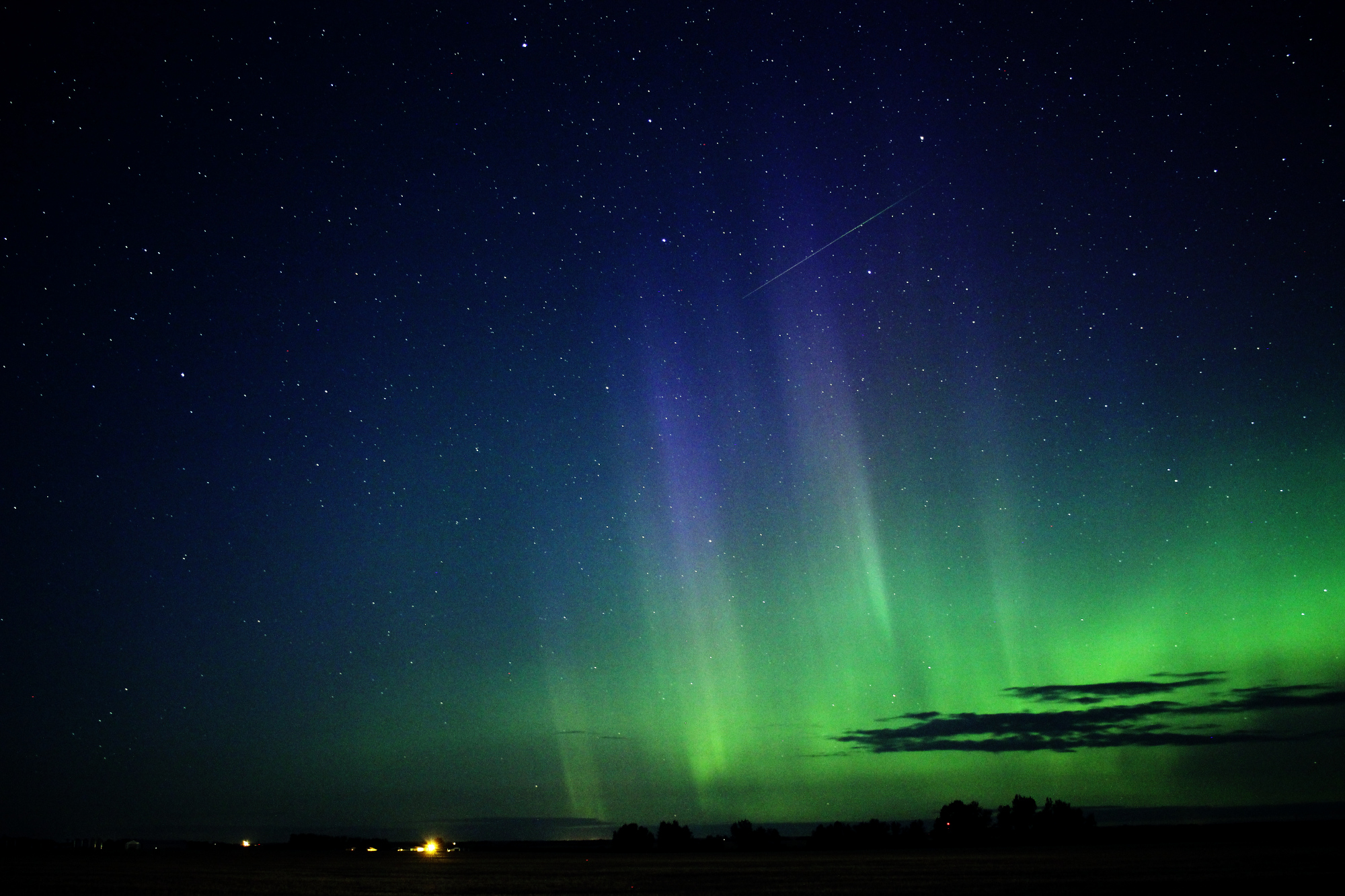
The Milky Way on a hazy August night

Part-time prevaricator


I went out around midnight to get some photos of the galaxy. My spot about 15 minutes south of town was dark and quiet, except the occasional lowing of cattle and the buzzing of mosquitoes. I saw a couple fireflies too.



Both photos: 20 second exposures, 11mm, f/2.8, ISO 1600. Edited using GIMP.

About midnight to 12:30 or so.
66 light exposures, 30 seconds each, 12mm, f/2.8, ISO 100, and 2 dark frames (same settings but taken with the lens cap on). The light on the tree came from my neighbour’s house lights.

The sky was that weird evening colour that could be perfectly clear or could be a solid wall of cloud. But the moon showed me it wasn’t cloud.


I took a stab a re-editing a photo of the aurora I took in 2016. It’s a lot more dramatic now. What do you think?

Tonight I headed out into the countryside, planning to take some startrail photos. The data weren’t looking good for any aurora.
Some showed up all the same. (What I saw was a very faint haze; the camera sees far better in the dark than I do.)

About ½ hour of rotation.

“And yet it moves,” as Galileo is alleged to have said, though the story is probably apocryphal.
The star trails in the photo and the videos all involve 70 frames, 30 seconds each, at 11mm, f/2.8, ISO 1600. The Milky Way is faint, but it’s there.

About midnight last night, after I got home from getting half an hour of chilly star trails (and charged up the batteries the cold killed), I checked the space-weather app on my phone. It told me I had a strong chance of seeing some aurora if I left like right now.
So I did, and between about 12:15 and 1 AM, I got almost 400 photos of northern lights.
And I made all 393 photos into a 30-second timelapse, too. (Every second of video represents a minute of real time.)
Nerdy details: each photo is a 5‑second exposure, 11mm, f/2.8, ISO 1600. The photos were edited for brightness/contrast; the frames in the video are all straight-out-of-camera.

Shot from our deck.